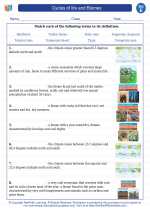Hydrosphere
The hydrosphere is the combined mass of water found on, under, and over the surface of a planet. It includes water in the form of liquid, solid, and gas, and encompasses oceans, rivers, lakes, glaciers, groundwater, and atmospheric water vapor.
Composition of the Hydrosphere
The hydrosphere is primarily composed of water, with about 97% of the Earth's water being found in oceans and seas. The remaining 3% is freshwater found in rivers, lakes, groundwater, and glaciers.
Importance of the Hydrosphere
The hydrosphere plays a crucial role in supporting life on Earth. It regulates the climate, transports nutrients, provides habitat for countless species, and is a vital resource for human activities such as agriculture, industry, and recreation.
Hydrosphere and the Water Cycle
The water cycle, also known as the hydrologic cycle, describes the continuous movement of water on, above, and below the surface of the Earth. This includes processes such as evaporation, condensation, precipitation, and runoff, all of which are driven by solar energy and gravity.
Human Impact on the Hydrosphere
Human activities, such as pollution, deforestation, urbanization, and climate change, have a significant impact on the hydrosphere. These activities can lead to water pollution, habitat destruction, alteration of natural water flow, and disruption of the water cycle, affecting both the environment and human well-being.
Study Tips
- Understand the different forms of water in the hydrosphere and their distribution.
- Learn about the processes of the water cycle and their significance.
- Explore the impact of human activities on the hydrosphere and ways to mitigate it.
- Use diagrams and visual aids to grasp the interconnected nature of the hydrosphere.
- Stay updated on current issues related to water conservation and management.
◂Science Worksheets and Study Guides Fifth Grade. Cycles of life and Biomes

 Worksheet/Answer key
Worksheet/Answer key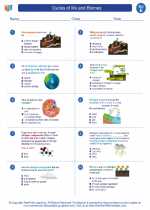
 Worksheet/Answer key
Worksheet/Answer key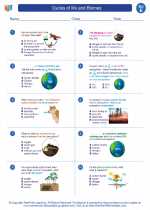
 Worksheet/Answer key
Worksheet/Answer key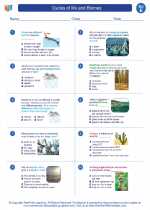
 Worksheet/Answer key
Worksheet/Answer key
 Vocabulary/Answer key
Vocabulary/Answer key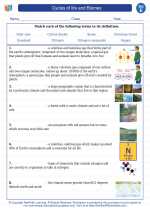
 Vocabulary/Answer key
Vocabulary/Answer key